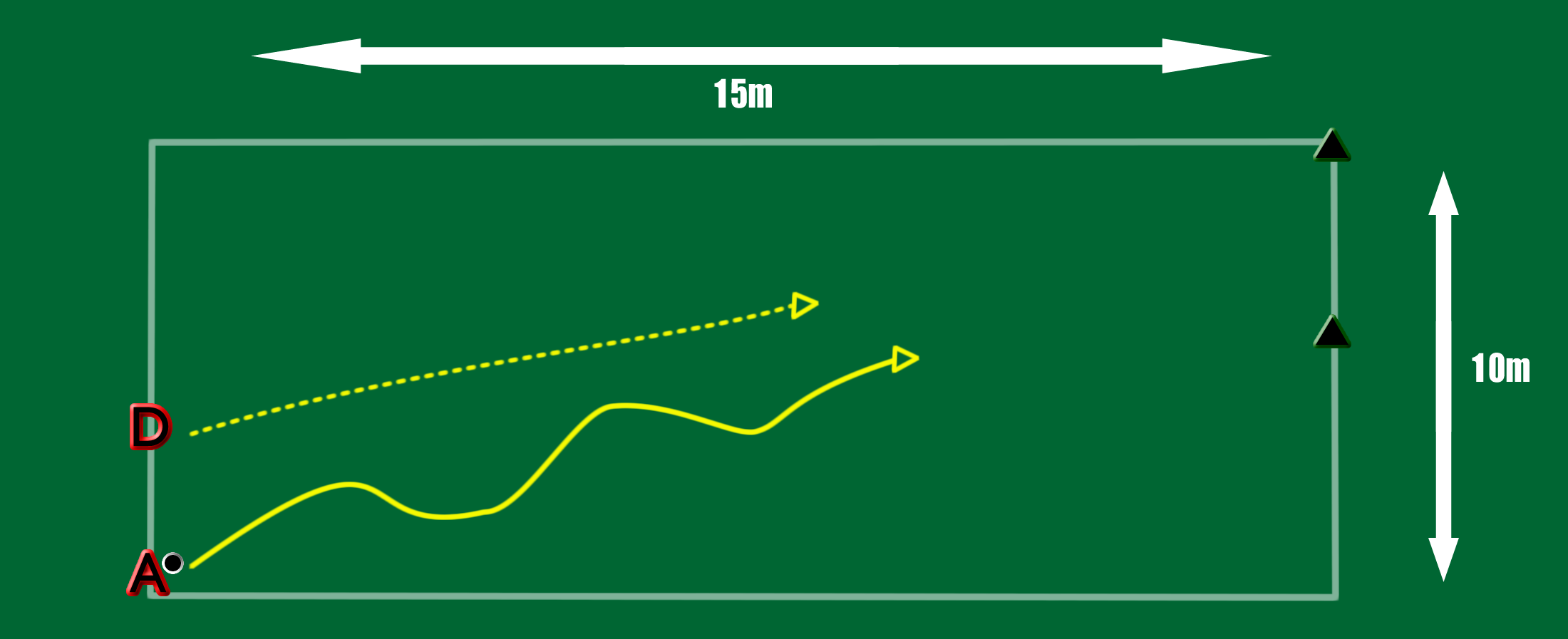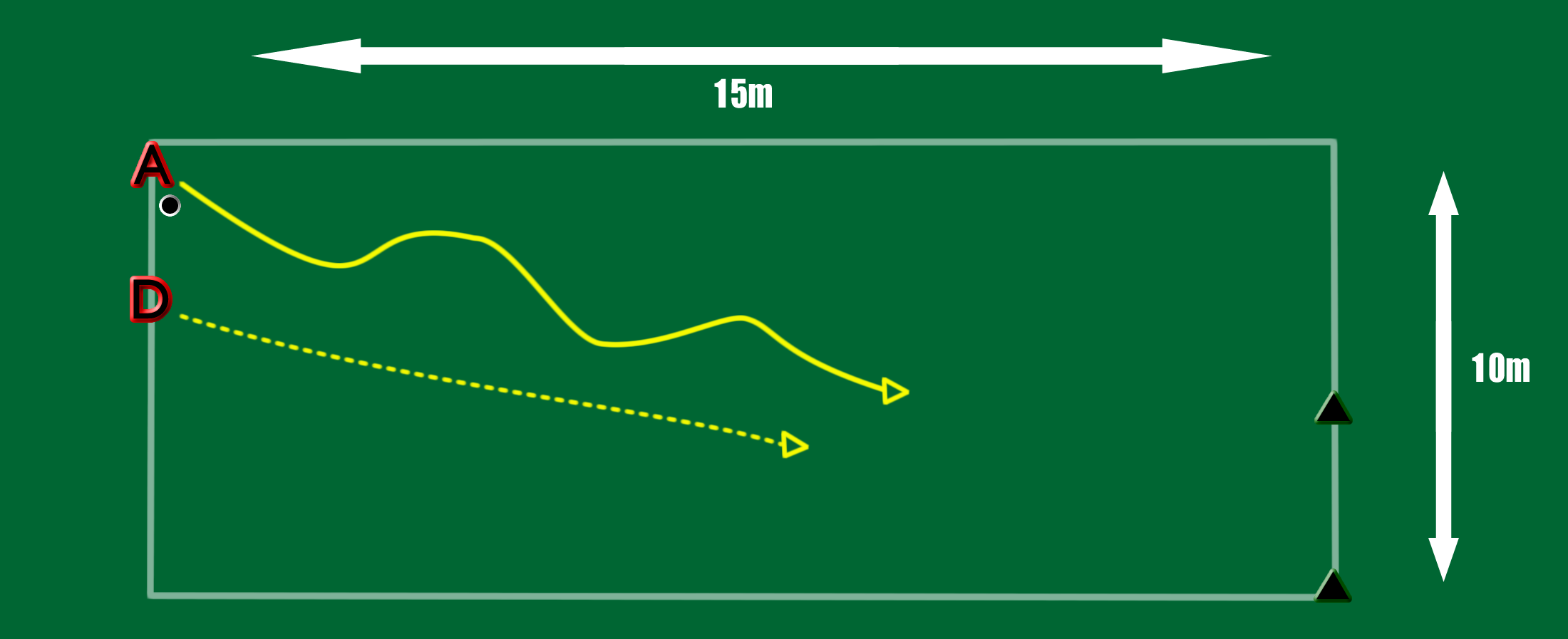FUNSTIX - Lesson 7
FMS running, side steps, cross steps, skipping, forward and backward shuffle steps, pivots, reaching,
TECHNICAL Channeling, Block tackling review
TACTICAL Player to Player Marking
FMS running, side steps, cross steps, skipping, forward and backward shuffle steps, pivots, reaching,
TECHNICAL Channeling, Block tackling review
TACTICAL Player to Player Marking
Activity 1
10 minutes Follow the Leaders. Players are positioned in pairs, so that they can see the instructor who is in a stationary position;
i) the follower in each pair replicates the footwork actions of the leader in each pair; change roles
ii) the follower replicates the arms actions of the instructor; change roles
iii) the follower replicates the foot actions of the leader and, at the same time, replicates the arm actions of the instructor; change roles
iv) repeat activity iii with the instructor moving slowly around the playing areas. This will challenge the follower to move to stay with the leader but also move to see the instructor.
Activity 2
i) 10 minutes Karaoke Kids Players line up in scattered formation, following the instructor’s commands, the players perform the following footwork sequence:
-jog forward 15 yards, stop, execute 3 backward shuffles to the left, 3 shuffles to the right- repeat 3 times
-jog forward 1 yards, stop, ¼ turn to the left, execute 6 cross steps to the left (left shoulder facing the start line),then 6 to the right,(right shoulder facing the start line)-repeat 3 times
ii) 6 minutes Diagonal Hop Scotch. In threes, each group with 6 cones. One after the other, each player takes 2 turns performing the footwork sequence as described in the diagram.
Activity 3
i) 10 minutes Side by Side In partners of equal speed and size, the player with the ball (A) tries to dribble the ball into Goal #1, 15 yards away on the endline. D (the player without the ball,) is positioned on the right side of A, a stick length and an arm length away. D runs beside A trying to force A towards Goal # 2. Rotate player’s roles. MAKE THIS ACTIVITY HARDER for D; A should change their pace (slow, fast, stop, start) and direction in order to cut behind D. MAKE THIS ACTVITIY EASIER for D: A1 should maintain a steady, pace, dribble in a straight line
Side by Side Diagram 1

Side by Side Diagram 2

Activity 4
15 minutes * 3 on 3 Block and Stop Hockey Game The game is played in a 25x 40yard area and begins with the A team in possession of the ball at the centre of the playing area. To score a goal, the A team must dribble the ball anywhere across the 25 yard goal line. The D team uses Block tackles to stop the A team from scoring. Players are assigned a partner of equal ability and one player of each team is assigned to one of the two teams. During the game, the D players must always be within a stick length and an arm length of their ‘partner’ on the other team and between their partner and the goal. ‘A’ players can only carry the ball for 5 yards and then they have to pass. MAKE THIS ACTIVITY HARDER FOR THE D TEAM: make the playing area wider and longer; allow unlimited dribbling
LESSON 7 CONTENT LEARNING DESCRIPTORS
FUNDAMENTAL MOVEMENT SKILLS
SIDE STEPS: the body moves left or right with the side of the body leading and the toes of the feet at right angles to the direction of travel; the steps should be short, weight is on the balls of the feet, primarily on the leading leg with the trailing foot touching the ground and quickly pushing off. The feet should be close to the ground during sidesteps
SKIPPING :is a series of step hops done with alternate feet. Teach skipping by having learners step and then hop on the same foot and then step and hop on the other foot swing arms to shoulder height in opposition with the feet, skip on the balls of the feet, keep movements smooth, speed and distance are not important, transfer weight from one foot to the other while doing the hop, step-hop, swing smoothly
CROSS STEPS (karaoke): Also known as Grapevine Steps; the body moves sideways while the trailing leg crosses in front and then behind the leading leg. When using cross steps to channel the ball carrier, the defender move the trailing leg in front of the leading leg . The feet should stay to the ground with the weight on the balls of the feet and the knees slightly bent.
PIVOT: one foot is in contact with the ground with the knee of that leg bent; the weight is on the ball of the foot. The other leg is bent with the weight on the ball of the foot and moves in a circle so that the body rotates around the support leg. Players should be able to pivot forwards or backwards, in both directions
SHUFFLE: the feet move in the following sequence-right, left, right; left, right left, the weight is on the balls of the feet with the knees slightly bent; the feet move quickly with short steps and the back foot never passes the front foot; the feet stay close to the ground.
BASIC STANCE (READY POSITION): feet shoulder width apart, keep feet below your shoulders; left foot slightly ahead of the right; weight low (sit); head Stick head rests on the ground in front and slightly to the right of the body. Player should be looking forward with head up for maximum vision and not down at their feet.
FEINTS; a fake movement of the head, or other parts of the body, when the actual intent is to go in another direction.
REACHNG (STRETCHING): are movements that move a part of the body away from the centre or trunk. Players should reach slowly, and smoothly and avoid bouncing.
TECHNICAL Block tackling review, Channeling,
Block Tackle: Purpose- To take the ball away for the opponent (D1) by blocking the forward movement of the ball with the stick; Use the standard grip; feet are staggered with left foot forward and right foot slightly back;. knees are bent; the stick is kept low (almost flat) on the ground in front of the feet. The tackler should line up with the ball carrier so that the two sticks are opposite each other. When executing the tackle, the stick should be held firmly in the hands with the left hand a bit ahead of the right hand; the stick should not be swung toward the ball but should slide along the ground. As the defender lunges to make the tackle; at the point of the tackle the defender should be stationary and balanced with the body weight low.
Channeling; Is a technique used to slow down the ball carrier, to force the ball carrier to move in a specific direction-usually towards the sidelines, or prevent A1 from passing square. The pressuring defender positions their body closer to the centre of the field than the ball carrier (A1) and a stick length and an arm length away from A1. The defender runs with their feet facing the same direction as A1 with their stick extended horizontally, (toe of the stick facing the ground), and even with the ball. The channeling player is attempting to direct, or force, the ball-carrier in a specific direction; the fundamental purpose of channeling is not to gain possession of the ball. IN THE FUNSTIX PROGRAM, PLAYERS SHOULD NOT ATTEMPT TO GAIN POSSESSION OF THE BALL FROM A SIDE ON POSITION OR FROM A POSITION BEHIND THE BALL CARRIER.
TACTICAL Player to Player Marking- is a type if defence used in many games including field hockey. Each member of the non-possession team is assigned a player on the possession team often know as a ‘check’ or a ‘mark’ . It is the responsibility of each of the players on the non-possession team to prevent their ‘check’ from receiving the ball. In the event that a player’s ‘check’ does receive the ball, the assigned layer is usually the player who puts pressure on (tackles, channels) the ball carrier.
Filtering
Instructions for Filtering the Resource Centre.
Click on a specific tag in the filter list to view articles and resources related to that tag.
For example, click on Attacking to filter the resource centre for attacking.
You can also do keyword based searching.

